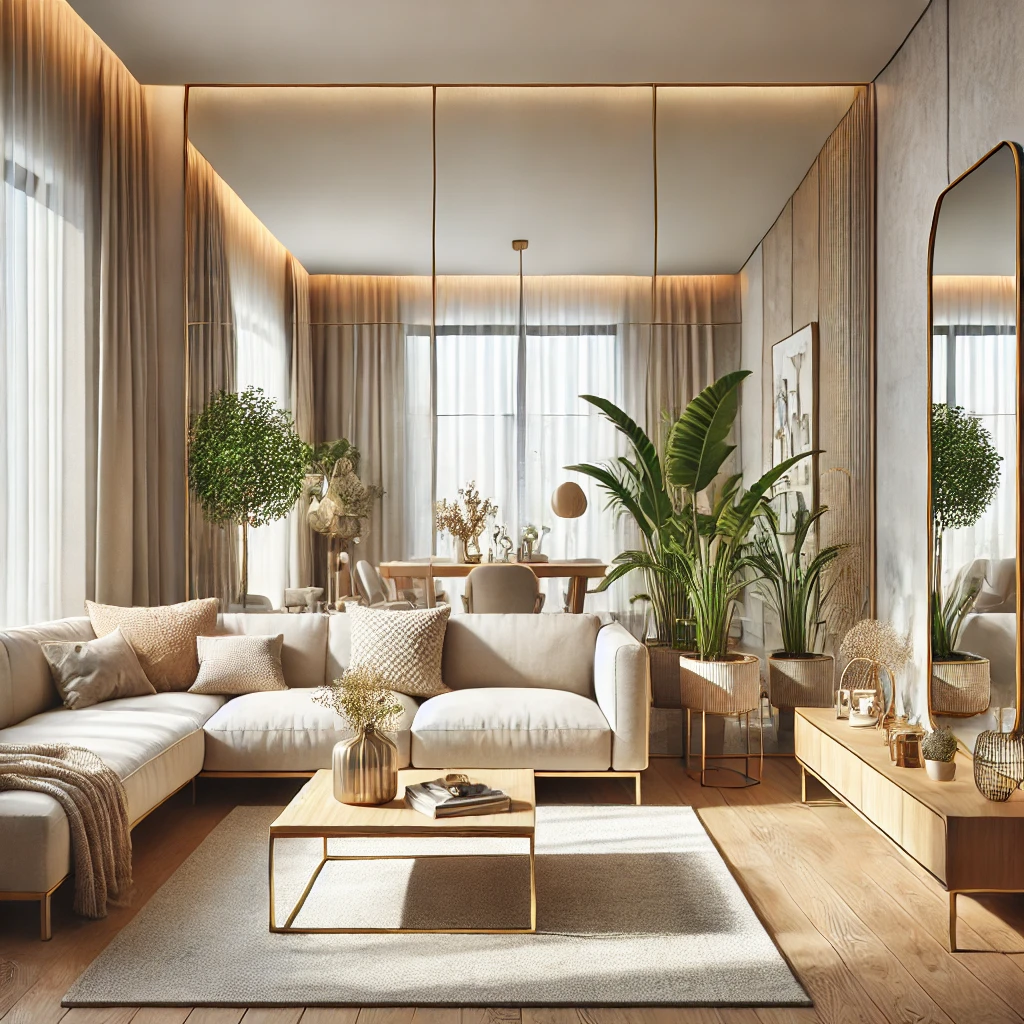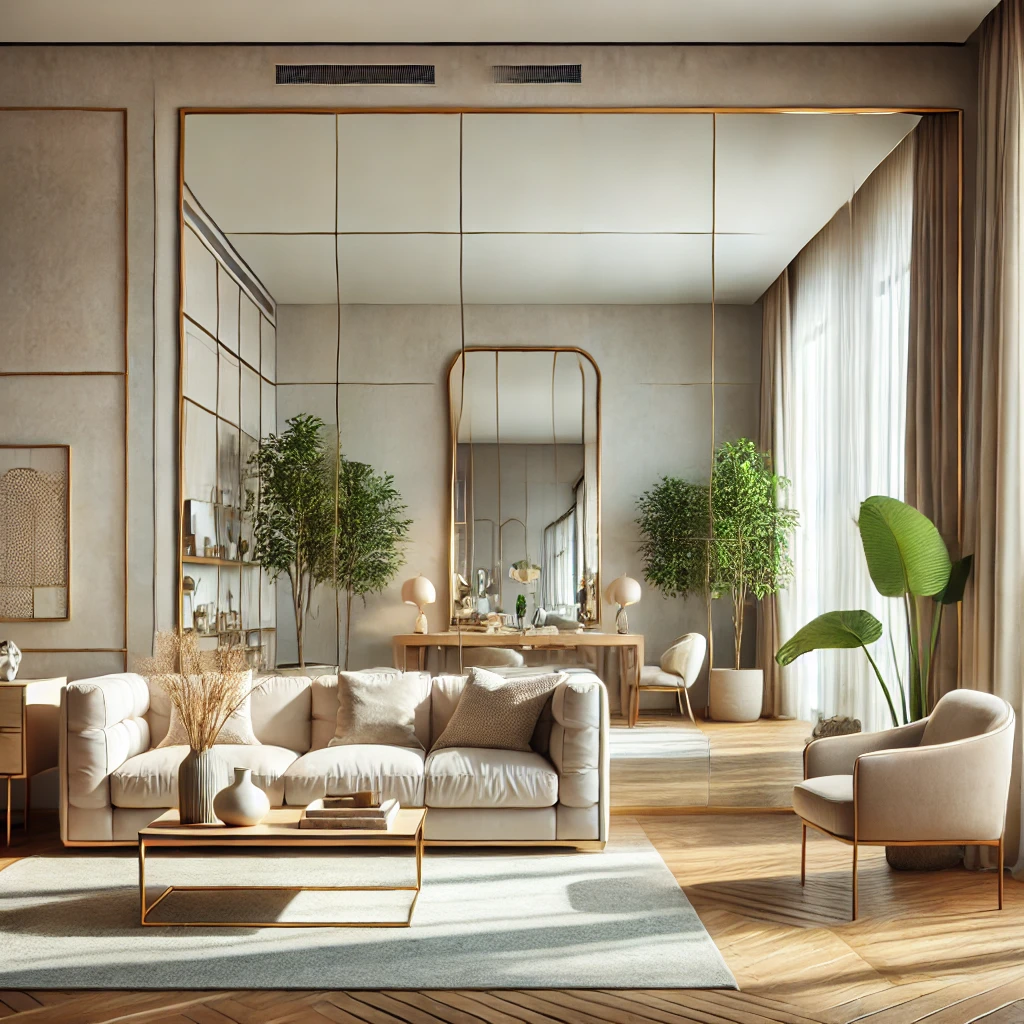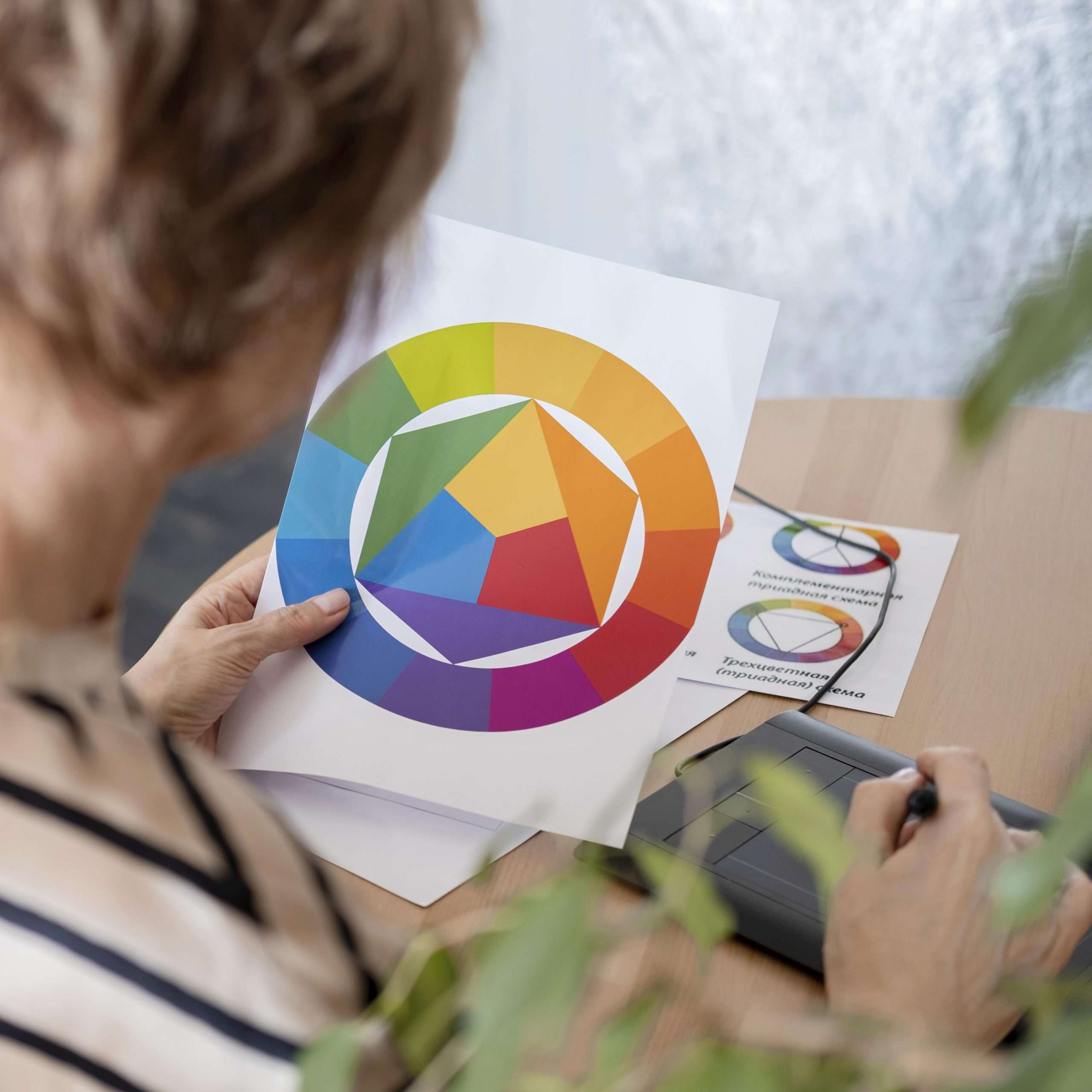Mirrors are one of the most versatile and powerful tools in interior design. Whether you’re looking to make a room feel more spacious, bring in more light, or add a touch of elegance, mirrors can transform any space in subtle yet impactful ways. With over 20 years of experience in interior design, I’ve seen firsthand how a well-placed mirror can dramatically change the atmosphere of a room. 🌟
1. Make Small Spaces Feel Larger 📏🏡
One of the most popular uses of mirrors in interior design is to create the illusion of space. In smaller rooms or apartments, mirrors can work wonders by making a space feel larger and more open.
– Mirrors in Small Rooms: Placing a large mirror on one wall of a small room can instantly make it feel more expansive. This works particularly well in living rooms, bedrooms, or dining areas where space is at a premium.
– Wall-to-Wall Mirrors: In small bathrooms or narrow hallways, consider installing a wall-to-wall mirror. This can effectively “double” the space visually, making even the tightest areas feel less cramped.
– Mirrored Furniture: Another option for tight spaces is mirrored furniture. Pieces like mirrored coffee tables, sideboards, or dressers reflect light and surrounding objects, adding depth without taking up visual space.
2. Brighten Up a Room by Reflecting Light ☀️💡
Mirrors are excellent at amplifying natural and artificial light, making a room feel brighter and more inviting. This is particularly useful in spaces that lack windows or where natural light is limited.
– Opposite Windows: Place mirrors opposite or adjacent to windows to reflect natural light into the room. This not only brightens the space but also enhances the view from outside, bringing the outdoors in.
– Behind Light Sources: Consider placing mirrors behind table lamps, wall sconces, or pendant lights. The reflection will amplify the light and make the room feel brighter and more dynamic. 💡
– Mirrored Backsplashes: In kitchens or bathrooms, mirrored backsplashes can reflect light and add a sleek, modern touch to the space.

3. Create Focal Points and Accentuate Décor 🎨🖼️
Mirrors can also serve as statement pieces or focal points in a room, drawing attention to key areas or architectural details.
– Oversized Mirrors as Art: An oversized mirror with a beautiful frame can serve as a piece of art on its own. Whether it’s a classic ornate design or a sleek modern frame, large mirrors make a bold statement in living rooms, entryways, or dining rooms.
– Grouping Mirrors: Instead of hanging one large mirror, consider creating a gallery wall of smaller mirrors in different shapes and sizes. This adds visual interest and texture to a space, while still reflecting light and creating a sense of openness.
– Above Furniture: Placing a mirror above a fireplace, console table, or sofa can help balance a room and draw the eye upward, giving the illusion of height and depth.
4. Add Depth and Dimension to Flat Walls 🖼️
Mirrors can be used to create depth in spaces where walls feel flat or uninspiring. Their reflective surface adds dimension and complexity to a room, making it feel more layered and interesting.
– Mirrored Panels: Use mirrored panels on walls to create a sense of depth in rooms with flat, featureless walls. This technique works particularly well in dining rooms, hallways, or even bedrooms.
– Floor-to-Ceiling Mirrors: For a more dramatic effect, consider installing floor-to-ceiling mirrors in narrow or long rooms. This creates an optical illusion of endless space, giving the room a grander feel. 🪞
– Angled Mirrors: Play with angles by positioning mirrors in unexpected ways, such as leaning a large mirror against a wall or using mirrors with unique shapes and frames to add a sculptural element to the room.
5. Enhance Natural Views and Outdoor Connections 🌳🏞️
If your home has beautiful outdoor views, mirrors can enhance this connection to nature by reflecting the scenery inside.
– Mirrors with a View: Position a mirror so that it captures and reflects a scenic outdoor view, such as a garden, lake, or skyline. This not only brings the outdoors in but also adds a serene, natural element to the room.
– Outdoor Mirrors: Don’t forget that mirrors can also be used outdoors. Place a mirror on a patio or garden wall to reflect greenery and create the illusion of a larger outdoor space. This trick can transform a small backyard or balcony into an expansive-feeling retreat.
6. Be Mindful of Mirror Placement 📏
While mirrors are incredibly useful, it’s important to be mindful of their placement. Poorly placed mirrors can reflect things you’d rather not highlight, such as cluttered spaces, unattractive areas, or harsh lighting.
– Avoid Unflattering Angles: Ensure that mirrors aren’t reflecting awkward or unflattering angles, such as the underside of furniture or cluttered areas. Take a moment to assess what the mirror will reflect before installing it.
– Avoid Direct Sunlight: Be cautious when placing mirrors in direct sunlight, as the reflection can create glare or unwanted heat in the room. Instead, position mirrors to reflect soft, indirect light.
– Consider Privacy: In bedrooms and bathrooms, be mindful of placing mirrors in areas that might feel too exposed. The goal is to create a space that feels comfortable and functional without compromising privacy.
Mirrors are a powerful tool in interior design, capable of transforming spaces by making them feel larger, brighter, and more elegant. 🪞✨ Whether you’re using mirrors to enhance natural light, create a focal point, or add depth, these versatile pieces can elevate the overall design of any room.
Thoughtfully placed mirrors can completely change the look and feel of a home. By following these tips and considering the unique needs of your space, you can use mirrors to create rooms that feel spacious, bright, and stylish — all while reflecting your personal taste and style. 🌿






